Additional information
| Product Dimensions | 4.02 x 1.61 x 2.28 inches |
|---|---|
| Item Weight | 10.2 ounces |
| ASIN | B00K7O2DJU |
| Item model number | DSCRX100M3/B |
| Batteries | 1 Lithium Metal batteries required. (included) |
| Customer Reviews | /** Fix for UDP-1061. Average customer reviews has a small extra line on hover* https://omni-grok.amazon.com/xref/src/appgroup/websiteTemplates/retail/SoftlinesDetailPageAssets/udp-intl-lock/src/legacy.css?indexName=WebsiteTemplates#40*/.noUnderline a:hover {text-decoration: none;}4.5 out of 5 stars572 ratingsP.when('A', 'ready').execute(function(A) {A.declarative('acrLink-click-metrics', 'click', { "allowLinkDefault" : true }, function(event){if(window.ue) {ue.count("acrLinkClickCount", (ue.count("acrLinkClickCount"), 0) + 1);}});});P.when('A', 'cf').execute(function(A) {A.declarative('acrStarsLink-click-metrics', 'click', { "allowLinkDefault" : true }, function(event){if(window.ue) {ue.count("acrStarsLinkWithPopoverClickCount", (ue.count("acrStarsLinkWithPopoverClickCount"), 0) + 1);}});});4.5 out of 5 stars |
| Best Sellers Rank | #27,166 in Electronics (See Top 100 in Electronics)#161 in Digital Point & Shoot Cameras |
| Is Discontinued By Manufacturer | No |
| Date First Available | May 15, 2014 |
| Manufacturer | Sony |
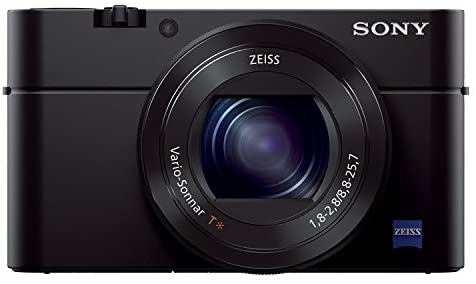
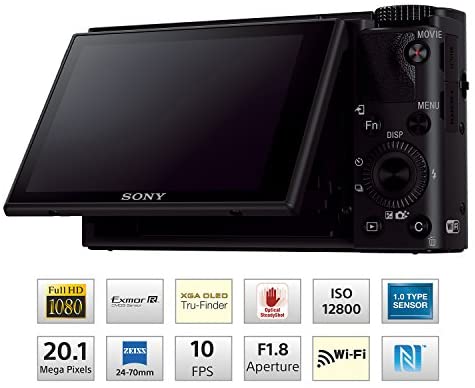
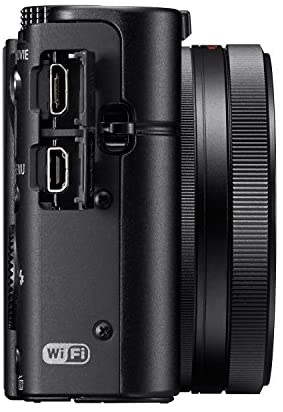
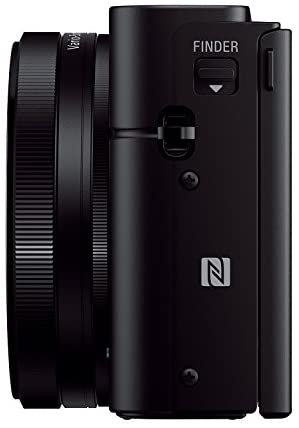
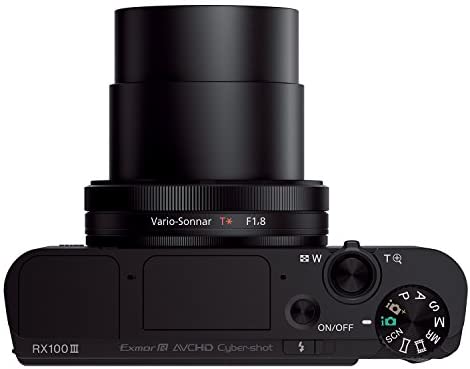
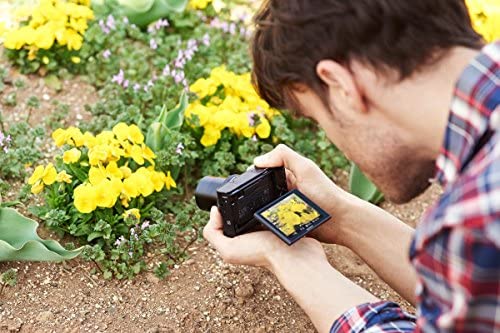
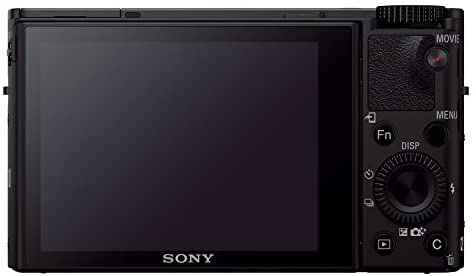
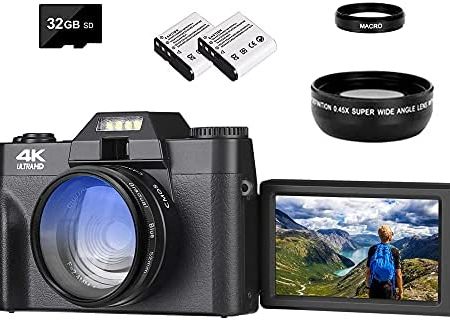

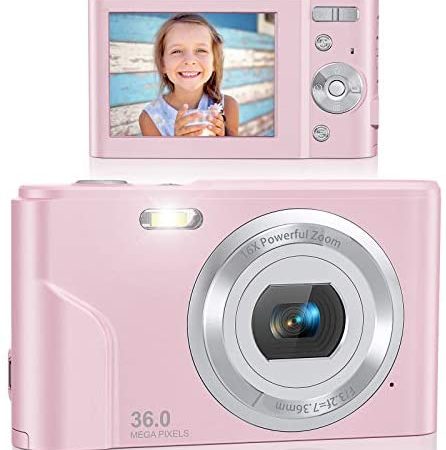
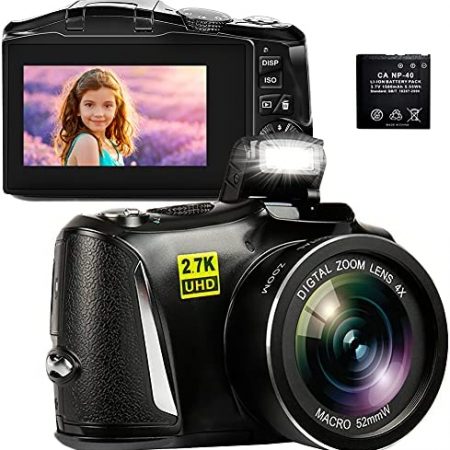
Walt Kurtz –
I bought the RX100 in its original configuration a few years ago when it first came out. I liked the camera from the outset and have taken more than a few pictures with it that I am really happy with. It is my choice for backing up my Nikon D4 or D800 when I can’t deal with taking along two large DSLRs. I took a look at DXO mark and they rate the sensor the same as the sensor for my old D200 which may sound like damning with faint praise but the D200 was a workhorse and shot a lot of great stuff. I will say at the outset that I like the M3 a lot. I am happy I upgraded from the original but I think that if you have the M2 you may not need this update. The faster lens is a noticeable improvement. Indoor shots without flash at reasonable ISO’s are much more feasible now.Updated 6/24/14 – I thought I would add a comment about a statement from the dpreview piece on the M3. Dpreview praises the cameras abilities and then go on to say that it is not “fun” to shoot with. I guess an old SX-70 may have been more fun with all the whirring and spitting of prints but beyond that I am at a loss. I have had great creative session with both the M1 and M3. In fact, one of my favorite things about the camera is that is so easy and transparent to handle.Pros:Articulating LCD – I think this is a huge improvement over the original RX100. The ability to easily shoot high or low angle pictures is a great advantage. I have always liked using compact cameras from the ant’s eye view and this makes it a lot easier to do. Like most of the construction of the RX100m3, the articulating LCD feels well built but clearly this is not a ruggedized camera. Care must be taken with the flash, EVF and LCD or damage could result. Things don’t feel cheap they just don’t feel “battle ready”Picture Quality – I really like the output of the RX100M3. The pictures are sharp, vivid and relatively free of noise at moderate ISO settings. One of the big improvements in the area of low light is the enhanced widest aperture of the lens. One can pixel peep any lens into a corner (no pun intended) but Sony has done a very respectable job here. I will discuss this more later but by going with a fast, modest zoom with a nice wide end, Sony has created a more enthusiast oriented camera. As Robert Capa said, “If your pictures aren’t good enough, you’re not close enough.”Zoom – As mentioned above the zoom range is modest. I just really like the ability to use 24mm equivalent at the wide end. The zoom speed is quite good. Again, I think it compares favorably to other high-end compacts that I have used.EVF – When I opened the EVF for the first time and look through it was terrible. Then I adjusted the diopter and it was beautiful. Seriously beautiful. This is my first EVF and I like it very much. I can see using it a great deal with this camera.Shutter – The shutters drops very quickly without any undue lag. I really like the burst mode on this camera with the shutter sounds turned off. It is a great way to get very natural candids of friends and family.Neutrals:Weight – The RX100M3 is noticeably heavier than the original. Noticeably but not significantly heavier. Yes, when you pick it up you are just a touch more cognizant of gravities pull but nowhere near the point where you would leave on the table because it’s too heavy to deal with. When carrying and using the camera the extra weight never crossed my mind.Size – Certainly related to weight but also a function of adding goodies like the EVF and articulating LCD. I wear a lot of clothes with big pockets and I have never been one to just stuff a compact camera in a pants pocket on an ongoing basis. I have a very small Lowepro belt case for my original RX100 and the new one fits perfectly even with an extra battery tucked inside. The size and weight differences are certainly discreet.Added 6/22/14 The current implementation of the Fn button is very nice. I really didn’t use this button in the past but now it brings up a very clear, easy to follow UI for the some of the most commonly accessed functions. I really like this feature.Added 6/22/14 I am growing very fond of the artificial horizon in the EVF. Despite 30+ years of photography I am still amazed how often in Lightroom I have to straighten the horizon. Maybe my head is just tilted. Whatever the cause, the artificial horizon really helps and as a result I am not losing any of the frame having to rotate in post.Cons:Menus – While the menu system on the M3 is improved and certainly better than the old NEX software it could still use improvement. My biggest complaint has to do with navigating between menu categories and sub-menus. To me the UI manipulation is not intuitive but is certainly workable.Functions – Marketing people are wonderful and I know scene modes and scene recognition must be important to some segment of customers but I am not in that demographic. I suppose there is little harm in all the bells and whistles but it is very funny that Sony includes both an Automatic and Superior Automatic mode. When does one say, “I don’t want the superior results, let me kick this baby down to stinky normal Automatic mode.”Items on which the jury is still out.Wi-fi – I know there are people who can’t wait for the favorite camera to come out with built in wi-fi so it can’t be dismissed. I would only say that thus far my experience with the RX100M3’s wi-fi functions have been cursory and I will amend this review when I am able to be more definitive about my experience.Would I recommend this camera?For a lot of people yes I would. If you are an enthusiast this is a credible compact contender. If you are an ultralight traveller who likes good photos this is also a good choice. If you are thinking of some for an adventure vacation with water, snow, sand or surf, probably better to look at a ruggedized compact. Up until the RX100 all my compacts had been Canon’s and they were great. I am happy with the move to Sony and believe I will be happy with the M3 for several years.
dillwood –
after 3 years of hard use this camera continues to function as a dependable tool.i’m a naturalist and photographer, usually carrying this camera and a canon 5D with a long lens multiple days each week.the sony performs very well, the tiltable LCD makes shooting ground level images possible with ease, the electronic viewfinder allows easy shooting in bright sunlight, the auto focus works great, but when manual focus is required the ‘focus’ ring provides quick sharp images.these small cameras have great depth of focus which is important when fotoing close ups of mushrooms, flowers etc, and explains why i rarely use my canon macro lenses.in short, i understand the sony’s limitations and work within its abilities and for my tasks am unaware of any camera that surpasses it.after thousands of images its charged and awaiting monday…i hope one day a sony update will include gps. when that occurs the sony mk3 will be retired.
Richard –
(Update Dec 6th 2014)I highly recommend this book for the RX100M3 by Gary Friedman. I bought it and love it ([…])I bought this camera because of its faster lens (f/1.8 to f2.8), which means, to me, more light entering onto the cameras sensor which, in turn, means to me slightly better images than previous models. Which translate to a shallower depth of field available. And that’s exactly what I like and want in this model, and precisely why I bought it, even though I also have the previous M2 model. One thing I want to note here before I go on. The Aperture seems to move quite fast from 1.8 to 2.8 thru the smaller zoom range. In that, a case could be made that this lens is more of a steady 2.8 thru out the zoom range.So then what exactly did I get with this upgrade from my M2 to my new M3? Well, you’ve got the newer Bionz X processer. The new 180 degree LCD (for Selfies if you are so inclined). The pop-up EVF (which is an innovation in and of itself, and a help with image stabilization when pressed against my face). Zebra pattern and focus peaking which is available on my RX10 and now the M3.I feel the 24mm-70mm lens (though not the same reach as my previous M2 model – 28-100mm) is a good walk-around lens. And since I have been using this same zoom range for a long time on my DSLRs, I feel very comfortable with this zoom range in a very capable and now compact camera. When I use this for portraits at the long end of 70mm I expect to shoot mostly 1/2 to 3/4 body shots to full body shots. As opposed to the previous models zoom range of 28-100mm where I used it up to head and shoulder shots at the long end.This camera has the same Bionz X processor that Sony has in their A7 line of cameras (one of which, the A7R, that I have). That was another plus for me in buying this camera. As far as image stabilization, it is important to compact cameras today and thus, to me. And I find that holding the camera up to my face while using the EVF gives me the ‘feel’ of a more stabilized shot. And my pictures look better to me. This is important to me because now that I am in my 60’s, try as I might, holding the M2 or my smartphone without an EVF – is not as steady as I’d like it to be or as I remember it was when I was younger. And I need image stabilization in lower light. And this EVF on my new compact M3 seems to provide that for me. The only ‘unofficial’ (perhaps non-technical) test I could do with this camera was to zoom it out to 70mm, and hold the shutter half-way to see how much ‘lock’ I had on the image. Then I tried it with my M2. My observation was that I did see an improved difference with the M3.There is a slight difference in camera size from the previous model (which I also have). The thickness of this model is about 2mm more. And the weight is about 8 to 9 grams more. What this also means in terms of fitting a leather case to it is that my previous models Sony leather case will not fit this camera. You’re going to need the Sony LCJRXF/B Premium Jacket Case (Black). This new case will fit all previous models as well as this model. Just as the Sony LCJRXC/B Premium Jacket Case (Black) would only fit the M2 as well as the M1. Some people think that the case for the M2 will also fit the M3. It will not. I have tried it. I also recommend the custom camera grip by Richard Franiec (camera accessories by Richard Franiec). This goes for about 35$ and is worth its weight in gold – to me. It is far better than the Sony grip that I used on the M2 for 15$. Its made of metal (anodized aluminium) is sleek looking, feels good quality and solid, and gives you a good grip on the camera while still maintaining the cameras pocketability (because it doesn’t protrude past the lens assembly). Of course with the camera grip added, the M3 will not fit in the Sony Leather camera case. So it is either one or the other. So to get around this I ordered another OP/TECH USA Soft Pouch Digital D-Micro (Black) for my M3 which I also have for the M2. And it fits great.If my review was any help with your decision to purchase, and I hope I was of some help, kindly choose ‘Yes’ in the comments section below. Thank You. Richard
Amazonuser –
I really love this camera. I came from a Nikon D52000 DSLR setup in search of a small point and shoot. (Got tired of carrying all the lenses and fuss associated with the DSLR.) I wanted a camera with large sensor and the best pictures for a point and shoot – smaller camera model. My search came down to the same three cameras time and time again. A Sony A6000, the Canon Powershot G7X and this camera. I instantly ruled out the powershot based on lack of tilt screen and view finder as these are a must for me.Went with the Sony A6000 as the specs were the best among the cameras. In terms of specs, this camera offers a ton more features – quality – speed – focus points – etc… This came with the standard power zoom 16-50mm. I took indoor and outdoor pictures and either the lens was defective or the pictures were simply that poor – disappointing. Non zoomed, the pictures look nice and not bad. But if you zoom, the edges in my opinion were soft and were not crisp at all. (Again, I thought I was being too critical and expecting too much from a non full size DSLR as the one I owned.) I then had to see if it was a lens issue and tried a 30mm Sigma Prime Lens. The difference was night and day in terms of quality. The images were crisp and just entirely better. Downfall though, if you use a prime, you lose the zoom and the small A6000 is then getting not so small and portable anymore. (Heading back towards the full DSLR type of setup.)Then there is this camera. Easy to use – navigate and the Zeiss lens it uses is incredibly sharp and great at all zoom levels the camera has to offer. Comparing this to the A6000 with kit lens was pretty clear. This camera outperformed and provided higher quality images hands down.So overall, while I did not get to test the Canonpowershot G7X, this camera is the winner. I have also learned through the camera buying process that while a camera may have tons of features such as the A6000 making it seem hands down better than all others, it may not be if it is used with a sub par or kit lens. So if you are in the market to buy simple camera and not invest in lenses, this is the winner. If you want to buy a smaller camera and plan to invest in high quality lenses, the A6000 is your winner. To me, this is a perfect carry everywhere do all amazing picture quality and build camera.
Amazon Shopper –
Have had this for about 3 years now and love it. No problems. Amazing picture quality. I was sick of lugging around my Canon 5DmkIII on trips, etc (for pleasure, not work) and didn’t want to carry so much stuff and weight and be a target. This is small but powerful and a good replacement with manual controls, RAW, etc. Love it.
Robert –
This is a truly fantastic compact camera with capabilities and performance that far outshine most smaller cameras of its type.A little background: experienced semi-professional photographer here, used to shooting with a full-size pro-level DSLR and pricey lenses. I wanted a camera that was simpler to carry on off days, for personal trips, and just keep on hand when not working, and not carrying the big camera rig. This seemed to fit the bill and I’ve been extremely happy. Image quality, while not *quite* the same as my DSLR, is nonetheless stellar. I’ve been recommending this to anyone who asks – the performance is truly awesome.Downsides? Well of course – first, it costs a lot more than many compact cameras, but the performance is another category entirely. If you want a budget camera this may not fit. If you want a reasonably priced camera that can produce pro-level images with less hassle – this is that camera. On a similar note, it’s a compact camera….but there are certainly other cameras that are significantly more compact than this. In it’s fully-off and lens-retracted state, it is still relatively thick, and the weight is more than I expected before I received it. For me, none of these are dealbreakers, and if you want amazing image quality, you can’t get it much smaller than this, so that trade is worth it to me.In short – great image quality, full manual control, variability in control setup, solid build, a great viewfinder, awesome lens and nice clear screen. What’s not to love?
the blue whale –
I have had this camera for over a year.In this year, I have used this camera more than any other camera I have ever owned, and I usually buy one or two new cameras every year.I’ve owned Nikon, Canon, Panasonic and Sony.This camera is extremely versatile–near DSLR quality in a compact and dense form factor (it’s a mini-brick, but there’s a lot of technology and optical wizardry in there). I take this everywhere with me. With the lens wide open, there is surprisingly good bokeh. The lens is wide enough for landscape shots when I travel. The articulating LCD panel is fantastic–this is the best selfie camera ever made! The pop-up electronic viewfinder is very useful in bright light.My RX100M III is beat up, scratched, scuffed, dented and marred, but it keeps on ticking. A testament to how much I use this camera.I also have the Sony a7R II, which is also an incredible camera. On a day to day basis, I use my RX100M III much more often.This is the best ‘compact’ camera I have ever owned. If you want 4K video, get the RX100M IV. If you don’t need it, save a couple hundred bucks and get this camera. It’s great.
Poppy44 –
This little camera provides incredible performance in a very compact package! I was looking for a “pocketable” camera with a fast lens and large sensor, and the RX100 III delivers. I initially felt that the pop up electronic view finder was a critical feature. However, in practice I have seldom used it, even though it provides a great image. An extremely useful feature is the tilting rear LCD screen, which I use often when holding the camera at waist level or over my head. This allows me to effectively frame the shot when the subject is down low (pets or grandkids) or if I have to contend with a crowd or other obstruction blocking the subject.I haven’t found the limited zoom range to be much of a handicap, especially when the camera is set to take 20MP exposures. While the files are big, this allows for substantial cropping, which has the same effect as zooming in further- without significant loss of detail. In the past, I typically set my cameras on “Intelligent Auto” or equivalent. However, with the RX100 III I’ve gone to consistently using the “Program” mode, in which the camera automatically sets the shutter speed and aperture. It is very easy to rotate the control wheel on the camera back with your thumb to select other aperture and shutter speed combos to your liking, depending on the situation. I’ve also set up the rear control wheel to allow very quick ISO adjustment. All the buttons plus the control ring on the front of the camera are programmable, which makes the camera highly customizable to suit your personal way of shooting. I’ve programmed the front control ring to adjust exposure compensation while in Program Mode. Being able to customize the functions of the buttons, etc., eliminates the need to dig through the many layers of menus to set the camera the way you want.Another feature that sold me on the RX100 III is its ability to shoot video in both AVCHD and XAVC S formats, the latter of which allows 50Mbps Full HD (1920×1080) 60p recording for incredible results. However, I’ve quickly found that my dated iMac isn’t nearly fast enough to easily work with such high quality video.I’ve found two references to be very helpful in getting up to speed on the RX100 III. The first is a YouTube video by Dave Cheung (https://www.youtube.com/watch?v=6SqyM3_AQu0) that offers what is essentially a tutorial on how to customize the functions of the camera’s buttons and other controls. You don’t have to set the controls as he recommends, but his suggestions are a very good starting place.The second is an eBook (Kindle edition) by Alexander White (https://www.amazon.com/gp/product/B00N325FIY/ref=oh_aui_d_detailpage_o00_?ie=UTF8&psc=1) that in effect provides a comprehensive pocket guide on my iPhone or iPad (requires the Kindle Reader app). I found this to be very useful during a recent trip to Disney World, unlike the useless little manual that comes with the camera. This eBook includes color photos showing the results of various camera settings and functions, and I often refer to it on my iMac as well.While the RX100 III fits in the front pocket of my jeans or shorts, I also often use the ApeCase120 belt pack, which is just large enough to hold the camera by itself. It has a secure velcro closure on the flap, which allows for quick retrieval of the camera, and the pack is well made and about as small as possible.
Rescue 51 –
After 30 days with this camera, I’m really impressed with not only the detail of the photos it’s capable of taking but the exposure when you look at it in Lightroom or your photo viewer. Leaving it on iA for most of the time returns excellent, clear and properly exposed shots. Also placing it on P for program mode works well with user-set settings for outdoor and some indoor situations. It also takes excellent videos. I found YouTube has some good videos on setting it up and tips on using it. My copy came from Amazon Warehouse Deals in Like-New condition. The build quality for this pocket camera is pretty good but…I would approach it with some caution. A couple of observations: The small size is great.. but for me, I don’t put it in my pocket. I use a small over-the-shoulder camera bag from Amazon. It is not weather sealed so I would be cautious using it in wet, humid, or dusty environments. Also the wrist strap is always on when I take it out and use it due to the 66 year old ‘uncertain’ hands..lol. The other thing I’ve noticed that one needs to be aware of is the lens protection “curtain” that opens and closes. You can buy a plastic push-on lens cap that fits over it perfectly to prevent the curtain from being bent, pushed in, or collecting dust/lint if you decide to pocket it. That’s where some of the dust would enter inside the camera to create possible dust spots on the sensor or lens itself. Finally the battery/memory card cover is a little flimsy but not bad. All other covers (HDMI port, USB terminal) are ok. The camera is a small revolutionary marvel of electronics plus a Zeiss lens that will not disappoint. If you take one or two precautionary steps it will return you with many great photos and video without surprise issues.
My Own AMZN –
I went to a concert a few months back and had good seats, but only had an entry level smartphone to take pictures. As a result, the pictures were quite disappointing. I didn’t want to be caught in a similar situation so after that experience, I decided to do some homework and look for a better camera. After reading many online camera reviews (articles and customer), I decided to go with the Sony RX100 III. The Sony RX 100 line is considered one of the highest quality cameras in a point and shoot form factor. As of today, there are six different RX 100 models, each with different capabilities and features. I chose the RX100 III over the other models for a few reasons. My main use of the camera is in a concert setting and the RX100 III, I believe, has the fastest lens of all the models and has the widest aperture which should be great for low light (though all models are considered great in low light also). Plus, though I don’t plan on using often, having a flip-up screen for selfies can come in handy. The RX100 III has an EVF viewfinder whereas, the RX100 I and II models do not have a viewfinder. I’m really glad I decided to get a camera with the viewfinder as that comes in very handy using this instead of the LCD screen during a concert as to not disturb other audience members.I won’t go into too much of the technical specs as but instead highlight features I like and dislike of the camera.Likes:- small size. I carry the camera in a case that I wear on my belt.- EVF viewfinder, great for concerts to turn off LCD display to not disturb others in audience- fast lens, 1 inch sensor, great for low-light situations- ability to shoot it JPG, RAW or RAW and JPG- three memory recall slots. This is great as I have saved all the settings I wish for concert picture taking in stored in one slot. All I need to do is recall the saved settings instead of having to fiddle with settings each time.Dislikes:- limited focal length of 24-70 mm optical zoom. Location, location, location. A good seat helps.- a lot of settings which can be a bit overwhelming- easy to accidentally bump the thumb wheel and change settings without knowing ( though the thumb wheel can be locked locked down)- buttons are not lit. So in the dark, I have to rely only by touch as to where the buttons areThere are a lot of various setting options with this camera. Some are not that intuitive. I highly recommend the book “Photographer’s Guide to the Sony DSC-RX100 III” as that explains a lot of settings which aren’t readily apparent, like having the LCD display to automatically go blank when using the EVF viewfinder.Along with the book, I bought a couple of accessories. I got the Sony LCD screen protector along with an external grip (Haoge RX100 Skidproof Camera Bracket Holder Hand Grip for Sony Cyber-Shot) as some say the camera is slippery. I also got an extra battery and external charger. However, I found that I use the USB cable to charge more often as with the external grip, just charging the battery with the USB cable is more convenient to me that removing the grip each time.I have the camera set to save pictures in both JPG and RAW format. This saves two pictures for each shot. RAW saves all the information. If a picture is over or under exposed, with proper software, photos captured in RAW format can be adjusted after the shot.The camera also records high quality video and is known as a good camera for vlogging, though I haven’t tried that at all.Overall, I really like the camera. It does take some getting used to and trial and error. I’m still learning some of the features. I included some pictures of my camera (with a external grip and screen protector). Also, a couple of concert photos (untouched, JPG format to give an idea of image quality) along with an outdoor low-light photo.If you have an up close seat, this camera can take some really terrific concert pictures, especially for a point and shoot.However, the 24-70 mm focal length does come into play. For pictures where I’ve been a few rows back, to simulate a zoom, I shoot using the highest megapixel, then crop the RAW photo. This is better than nothing, but there then is some noticeable noise in the picture. Acceptable but not as good as non-cropped.The best compliment I received thus far is a friend said something like “What’s gotten into you? Those are the best pictures I’ve ever seen from you!”. Good to know, better than the fail with the low end smartphone.I give the RX100 III five stars.